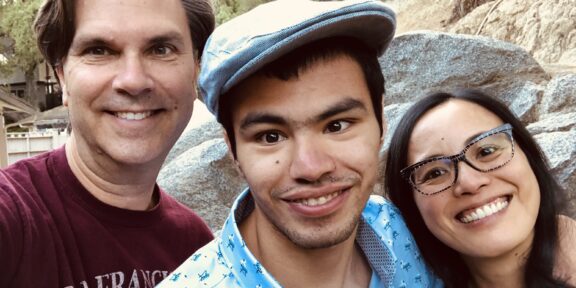When Hydeia Broadbent was born in Las Vegas 19 years ago, theodds were already stacked against her. Her biological mother, adrug addict, abandoned her in the hospital. Six weeks later,Patricia and Loren Broadbent adopted her to give her a chance for abetter life. But the Broadbent’s soon noticed that their littlegirl was susceptible to minor illnesses. When Hydeia was3-years-old, they discovered she was HIV positive.
At age 6, Hydeia began to sensitize youngpeople to the AIDS/HIV problem among youth.
“I thought that it was important for meto try to talk and help young people know a lot about AIDS. I liketo talk to young people; they listen to me because kids listen tokids,” said Hydeia, who is now an AIDS activist knowninternationally.
“I go to colleges and talk to students. I havedone some TV shows and I am always available to talk to youngpeople. They are my friends.”
Hydeia was one of several visitors to NorthCarolina Central University who spoke to students at the March18-21 Stomp Out HIV/STDs Student Leadership Conference.
The students came from 12 North Carolinahistorically black colleges and universities.
The conference coincided with media attentionon recent studies by the Centers for Disease Control and Preventionand other organizations showing an increase of HIV cases amongblack college students in North Carolina, with 84 black malestudents testing positive between January 2000 and December2003.
CDC Medical epidemiologist Lisa Fitzpatricktold delegates that the problem affected not just NorthCarolina.
“There is no difference in what is happeningin North Carolina with what is going on around the country,” shesaid. “This is a national problem.”
But Fitzpatrick said most cases of HIV werenot found at HBCUs.
“The media got it in their heads that this isan HBCU problem. That’s a misconception. Of the 84, 60 percent werefrom non-HBCUs and only 40 percent were from HBCUs,” saidFitzpatrick.
The state Division of Public Health’s HIV/STDsPrevention and Care branch sponsored the conference, which wasdesigned to “provide student leaders from North Carolina’shistorically minority serving colleges and universities to make adifference . . . to stomp out HIV … to promote individual andcollective responsibility to prevent the spread HIV/AIDS/STDs,”according to the conference program.
Phyllis Gray, the state Department of Healthand Human Services Minority AIDS Initiative program manager, saidthe conference focused on young black people because they have tiesto the community mostly affected by HIV.
“These young black students in school haverespect in their communities,” said Gray. “We need to work withthem and also help campuses in protecting students from HIV.”
Students who attended the conference said thatthey had learned a lot and would work tirelessly to educate theirpeers on the dangers of HIV.
“I enjoyed being part of the conference,” saidTai Bryant, a health education junior at North Carolina Central. “Ilearned that we have to learn to empower ourselves in our behaviorsand make changes. It helped us meet other peer educators from otheruniversities and share ideas.”
Talesia Griffin, a freshman from Barber-ScotiaCollege majoring in biology, agreed.
“The conference gave me some in-depthinformation on how devastating AIDS is and I will go back to schooland have programs to help my African American friends,” shesaid.
Brandon Braud, who is HIV positive and spokeat the conference, urged students to use condoms and to be braveenough to take HIV tests.
“HIV is a reality,” said Braud. “It’simportant for people to know their status. Those who are negativeshould work toward educating themselves on remaining negative. Andthose who are positive should take responsibility and do somethings to help others.”
Lovemore Masakadza, a student at NorthCarolina Central University, is editor-in-chief of The CampusEcho.



